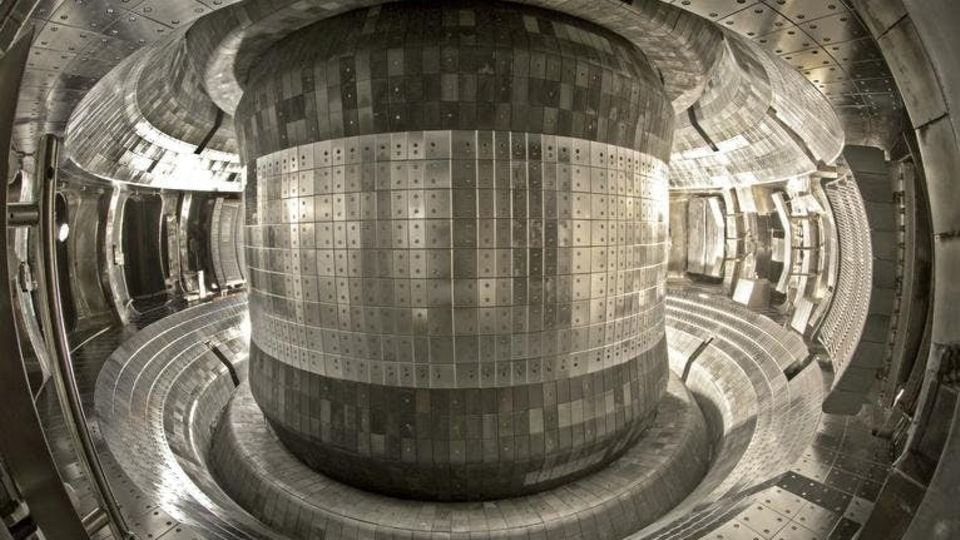energy transition
Nuclear fusion by 2028 – then Microsoft wants to use fusion power from the start-up Helion
The current facility of Helion
© Helion / PR
Energy from nuclear fusion is a dream of many. But experts keep warning that no breakthroughs are to be expected in the near future. Microsoft is different: The technology giant wants to use fusion power in just five years.
Germany gives a wide berth to nuclear or even fusion energy. It’s very different around the world. Recently, Bill Gates presented the roadmap for his small sodium reactor – one of the special features is the integrated huge “battery” (Bill Gates’ mini nuclear power plant is scheduled to go online in 2028 – hundreds of reactors are to follow). Microsoft has now signed a contract with the start-up Helion to develop, build and operate a fusion reactor. A fusion reactor uses the same energy that heats the sun: the fusion of hydrogen atoms to form helium. Such a power plant is considered the “Holy Grail” of nuclear physics. The same principle is at work in the hydrogen bomb, but while the bomb managed to be built in the early 1950s, there is still no working fusion reactor to this day.
No fusion current before 2050
Many experts therefore assume that fusion energy cannot contribute to replacing fossil fuels, since this technology will at best produce electricity on an industrial scale around 2050. Helion, on the other hand, promises to supply electricity for Microsoft’s data centers as early as 2028.
To do this, Helion uses its own technology. The large, state experimental reactors all work on the principle of a tokamak. In a twisted donut-shaped ring, plasma is heated, accelerated and compressed – until conditions like the sun prevail (Fusion Race – Reactor building in France has been completed). Different start-ups approach mergers differently. A fusion is triggered selectively with laser beams. Instead of continuous fusion, there is a series of “mini-explosions” (USA achieve breakthrough in fusion technology – for the first time more energy was generated than consumed).
Own way to the merger
Helion, on the other hand, takes a third path. The current plasma accelerator is less than 15 meters long. In it, deuterium (a hydrogen isotope) and helium-3 are heated to a plasma at 100 million degrees and accelerated in two rings. Then magnetic fields squeeze the two plasma rings together in a central chamber until fusion occurs. “We recover all of the energy we put into fusion electrically, so we can build systems that are smaller, cheaper, and evolve them quickly,” says CEO and Helion founder David Kirtley. Helion is confident that it will be able to produce the electricity very cheaply in the long term. Kirtley says the company’s goal is to bring costs down to one cent per kilowatt hour. Another criticism of tokamak reactors such as ITER is that even if the reactor would technically work, the system is so expensive that the electricity cannot be used economically.
Binding Contract
Microsoft has committed to start purchasing power from Helion by 2028. Initially, 50 megawatts of electricity are to be generated. The contract is binding, Kirtley stresses. If Helion does not succeed in delivering the agreed electricity in 2028, contractual penalties are envisaged. A new prototype should be ready in 2024, the time frame until 2028 is extremely sporty. Companies like Helion have a fundamental advantage over facilities like ITER. Their facilities are far smaller and cheaper than the large reactors, so it is also possible to build a new generation much faster. Helion still has to solve other tasks before it can operate, such as making sure that there is enough helium-3 available as fuel. In addition, radiation can be another problem, deuterium actually emits dangerous neutron radiation at these temperatures. The hurdles are high, but the experts at Microsoft seem to assume that Helion will overcome them.
Also read:
Bill Gates’ mini nuclear power plant is scheduled to go online in 2028 – hundreds of reactors are to follow
Nuclear Fusion Race – Reactor building in France has been completed
USA achieves breakthrough in fusion technology – for the first time, more energy was generated than consumed




